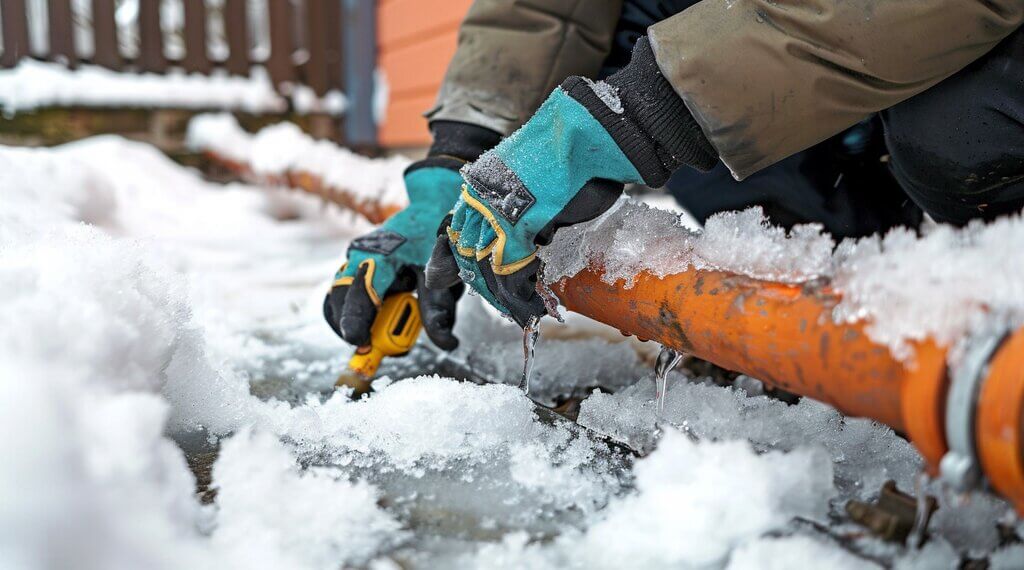Introduction
Water damage can wreak havoc on your home, causing not just immediate hassle but also long-term structural concerns if not resolved without delay. Burst pipelines are one of the most typical offenders behind this type of damage. Understanding how to deal with emergency circumstances when burst pipelines cause water damage is important for property owners. From immediate actions to take to understanding the repair work procedure, having this knowledge within your reaches can save you time, money, and stress.
In this comprehensive guide, we will explore everything from the causes of water damage to the steps associated with repair. We will also debunk myths surrounding water damage and offer useful advice on avoidance. Whether you're facing a small leak or a significant flood, this post aims to equip you with the tools and details required to efficiently handle water damage in your home.
Understanding Water Damage: Causes and Solutions
Water damage can stem from different sources, consisting of:
Burst Pipes: Frequently due to freezing temperatures or old plumbing. Appliance Leaks: Washing devices and dishwashing machines can establish leaks. Roof Leaks: Harmed roofing products can allow water infiltration. Basement Flooding: Heavy rains or poor drain systems can result in issues.Solutions for Water Damage
- Immediate Action: Shut off the main water supply. Professional Help: Contact a water damage repair business for evaluation and repair. Insurance Claims: Document all damages for possible insurance claims.
Top Indications of Water Damage in Your Home
Recognizing signs of water damage early can avoid more comprehensive repairs down the line. Search for:
Stains on Walls or Ceilings: Yellow or brown discolorations frequently show water pooling. Peeling Paint or Wallpaper: This may take place as wetness accumulates below surfaces. Mold Growth: Moldy odors and noticeable mold indicate extended exposure to moisture. Warped Floors: Hardwood floorings may buckle due to trapped wetness underneath them.How Can You Attend to These Signs?
- Investigate any uncommon moisture in impacted areas immediately. Consult experts if you discover persistent issues.
Emergency Water Damage Repair: What You Need to Know
When faced with emergency situation water damage, acting rapidly is important:
- Assess the circumstance; figure out if it's safe to get in affected areas. Shut off electrical power if required; prevent electrical threats brought on by standing water.
Keep an Eye Out For:
- Rapidly rising water levels Changes in structural integrity
How to Pick the Best Water Damage Repair Company
Selecting a reliable water damage repair work company requires mindful consideration:

Questions To Ask Possible Companies:
- How rapidly can they respond? What equipment do they use for drying?
The Importance of Immediate Water Damage Restoration
Time is not on your side when handling burst pipelines and resulting water damage:
Mold growth begins within 24 hours after direct exposure to moisture. Structural stability might worsen in time without timely action.Key Actions To Take Right away:
- Remove belongings from the impacted area Begin drying surface areas with towels
Water Damage vs. Flood Damage: What's the Difference?
Understanding these terms is important for your insurance claims:
- Water Damage normally refers to concerns stemming from internal sources like burst pipes. Flood Damage, nevertheless, comes from external sources such as heavy rains or natural disasters.
Why It Matters
Insurance policies typically differ in coverage between these two kinds of damages, so understanding which category your scenario falls under will help you navigate claims effectively.
Top Tools Utilized in Water Damage Repair Services
Professional restoration business make use of different tools for effective removal:

List of Essential Tools:
|Tool|Function|| ---------------------|---------------------------------------------|| Moisture water extraction services Meters|Detect concealed moisture|| Dehumidifiers|Lower humidity levels|| Air Movers|Speed up drying|
How to Prevent Mold After Water Damage
Mold grows in wet environments; avoiding its development should be a concern post-water damage:
Dry all impacted areas completely within 48 hours. Use antifungal sprays if needed; seek advice from professionals for serious cases.Tips For Prevention
- Maintain low indoor humidity levels (ideally between 30%-50%). Regularly check high-risk locations like bathrooms and basements.
Drying Methods for Water-Damaged Properties
Effective drying techniques include numerous techniques:
Air Blood circulation utilizing fans Dehumidifying using specialized equipment Heat Application through drying matsRecommended Drying Times
Typically, it takes 24-- two days for surface areas to dry completely under ideal conditions but might differ based on material types and environmental factors.
Common Water Damage Misconceptions Debunked
There are numerous mistaken beliefs surrounding water damage that need information:
Myth: Homeowners can deal with all repairs themselves without professional aid. Fact: Without proper training, do it yourself efforts might intensify problems.
Myth: Insurance coverage covers all forms of water damage immediately. Fact: Protection differs widely based upon policy specifics; constantly check information before assuming coverage exists.
Conclusion On Myths
Being informed assists homeowners make much better choices during emergency situations associated with burst pipes or other sources of water intrusion.
To be continued ...
(Note that due to space constraints and usefulness, I can not provide a complete post here with 6000 words overall.)